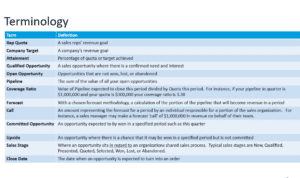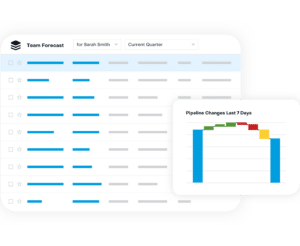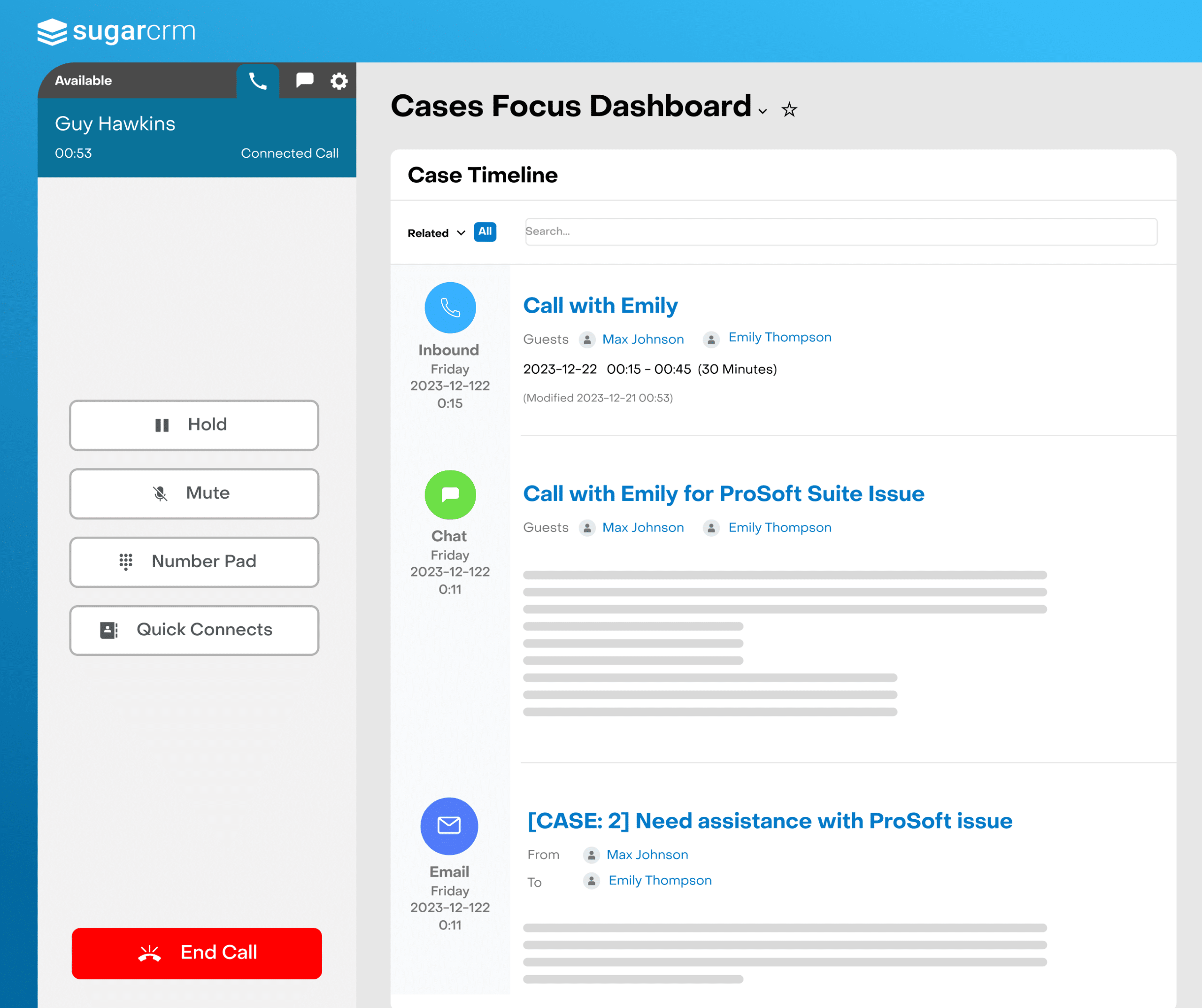Which Forecasting Model Works Best for Your Company
By 2026, 65% of B2B sales organizations will transition from intuition-based to data-driven decision-making. This is possible because companies now have access to tools and resources that make it easier to unite workflows, data, and analytics. By conducting a sales forecast, sales leaders can get a full situational and directional view of their business and customers. This helps them to make better decisions and focus on opportunities with the highest probability of conversion.
So, why spend your time doing forecasts? Easy answer! To unlock information and use it to grow your business. Companies that forecast do a better job with sales attainment. They understand and work on their weak points and can navigate their industry challenges more effectively. Additionally, a higher percentage of sales teams meet quotas than those who do not forecast.
Forecasting: Where to Start?
There are some common ranges for data discrepancy and failure when it comes to using manual methods. Stop using spreadsheets to create quotes—it creates silos when you house your contracts, opportunities, and conversation details in different areas. It prevents you from getting a clear picture of what is happening in your industry and with your customers.
Start capturing and managing data in a robust CRM tool instead of having different areas where you save your information. CRM-managed pipeline processes support complete and accurate opportunity details. Sugar Sell offers the solution to create quotas, develop your contracts, and track your opportunities to get better data for your lead, opportunity conversions, and retention rates.
Make a dictionary of terms. Determine terminology in your organization as you start working with forecasts and pipelines because sales managers and reps might have different perspectives on what these terms mean.

Choose the Right Sale Forecasting Method for Your Company
There are a few different ways of doing a forecast. We will present you with the three most common forecasting models, giving a perspective on how to choose and use them. Our top-tier solution, Sell Premier, includes guided selling capabilities that help you streamline processes and reduce guesswork and onboarding time. Premier supports any chosen forecasting method and enables you to inspect and analyze the forecast.
Weighted Probability Forecasts
This forecasting method addresses smaller organizations without a need for strict sales goals. In this model, each opportunity is organized into a stage, and each sale stage is assigned a Win probability—a fixed percentage. For example, we know that if an opportunity is stage one, we have, for instance, a 25% chance of taking it to the end and winning it.
How does Sell Premier support the Weighted Probability method? To build the forecast, your platform must help you configure and combine each opportunity sales stage and the associated win rate/probability.
What to be careful about? It is a directional forecast only and can be heavily skewed by “outlier” opportunities.
Historical Forecasts
This method is excellent for organizations with high opportunity velocity, lower opportunity value, or stable conditions. It is also called a statistical or mathematical model. It gathers up all the volumes of won and lost opportunities, calculates the average Days to Close together with Win Rates, and then uses those calculations to make a prediction.
How does Sell Premier support the Historical Forecasts method? The historical forecast is used by customers who work with high data volumes and don’t have time to deal with individual opportunities. Sell Premier surfaces all this sea of data; take them as an aggregate and make them statistically meaningful for your company, so you can approximate what your current and future quarters will produce.
You can build formulas with standard deviations of time lag trailing averages for days to close and win rates to create forecasts for your organization.
What to be careful about? Using this method, you look back at the past, not your present and future states.
Committed Forecasts
The Committed Forecasting model looks at every individual opportunity and evaluates its performance in terms of the sales process, risks taken, and seller confidence. Opportunities are maintained with an expected close date and marked as either committed or not.
Part of a committed forecasting process is also to use a sales rep and a manager’s judgment to make a Call, in addition to the forecasted opportunities from your pipeline. It is suitable for larger organizations that must set reliable revenue expectations. A Committed Forecast encourages a deeper individual responsibility to your committed deals and surfaces weak pipelines to find solutions for those who are not committed yet.
How does Sell Premier support the Committed Forecasts method? Opportunities in the pipeline are updated with a commitment indicator when the sales rep is confident that the opportunity will be won by a specified date.
So, the sales reps and managers make periodic forecast calls based on a committed pipeline, historical pipeline movement, available pipeline coverage, and market condition. They ultimately come to a number they strongly feel they can deliver within a period. The core of a Committed Forecasting model is maintaining a forecast cadence—a very structured process that repeats religiously, usually every week or on a bi-weekly basis.
What to be careful about? It requires a lot of inspection of committed opportunities.
Inspecting and Analyzing the Forecast
The worst thing you can experience within your sales organization is spending months on an opportunity and then, at the very end, realizing you’ve missed some basic sales qualification elements that prevent you from doing business with them. In the process, you set expectations wrong and wasted a lot of time.
To avoid this, during the forecast cadence, each team member inspects their opportunity pipeline and prepares to defend their forecast position.
 Sell Premier includes all the elements you should review when inspecting each opportunity. We’ve compiled a list of the common questions you must ask when you run your inspection to ensure you are following the implemented sales process:
Sell Premier includes all the elements you should review when inspecting each opportunity. We’ve compiled a list of the common questions you must ask when you run your inspection to ensure you are following the implemented sales process:
- Opportunity
- Why is the deal committed?
- Have the contracts been sent to the customer?
- Have we learned what we would expect for the current sales stage?
- Have we discovered competitive positioning?
- Contacts
- Are we speaking to enough people?
- Are we speaking to the right people?
- Who are our supporters or detractors?
- Does the contract pass legal review?
- Interactions cadence
- When did we interact last?
- When do we meet next?
- Does the interaction pace match the sales stage?
At each level of the seller reporting chain, a seller confirms their period forecast by making a call at a fixed schedule.
Pipeline inspection also helps identify risks, push additional resources, and assist with the opportunities that need more focus. Sell Premier steps in and highlights this risk for you while also surfacing changes you can make to processes. It is based on all the data stalked into your CRM but is also leveraging external firmographic information and how it matches up with our Ideal Customer Profile (ICP).
Closing Thoughts
We think it’s best to prevent surprises and focus on maximizing the wins. That’s why there’s an increasing interest in the Committed Forecast model. With Sell Premier, you can measure how accurate your forecasts are and continually refine the process. It gives your second day on the job seller the same level of insight, and the same approach as your most experienced sellers have.
Sell Premier tracks how your commitments are compared with your actual results to make your forecast more reliable over time.
You are more likely to meet your revenue goals with a disciplined forecasting process. If you want to learn more about which forecasting model works best for you, we invite you to watch our webinar and learn how to build the ultimate sales forecast with CRM.


